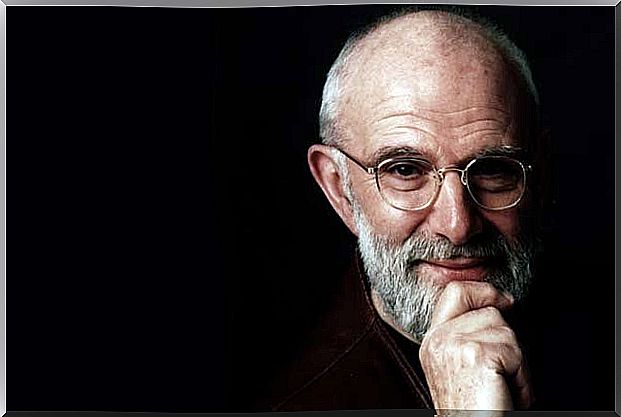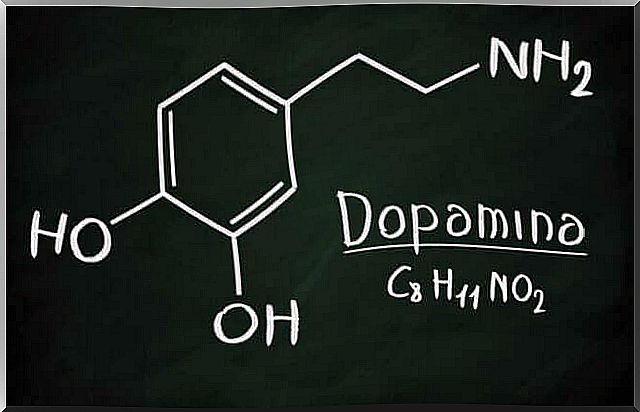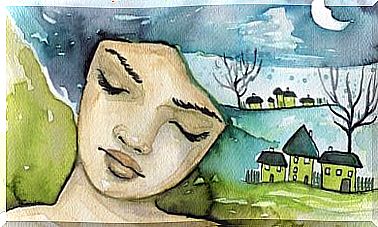Ray, A Strange Case Of Tourette

The most interesting thing about Ray is that he illustrates in a very special way the communication between the body and the mind. It is a case of Tourette that was masterfully described by neurologist Oliver Sacks, but it is surely not unique. The problem is that these neurological conditions are not always treated with the same sensitivity that Sacks did.
In the description of Tourette de Ray’s case, Dr. Sacks himself laments that a state has been reached in which we have ” a neurology without a soul and a psychology without a body. ” Instead of integrating the psyche and the organism in the same whole, during the last century there has been an attempt to specialize the study of each field, independently of the other.
The story of the meeting between Ray and Oliver Sacks began in 1971. Sacks had carried out the treatment of some patients with a disease called “encephalitis lethargica.”
However, after being brought out of that condition, they had something that appeared to be Tourette Syndrome. The Washington Post became interested in the subject and wrote an article about it. This allowed Ray and Sacks to meet.

Ray and his Tourette case
In those years, Tourette syndrome was talked about almost as if it were a legend. It had been described by Gilles de la Tourette, Charcot’s pupil and Freud’s companion in 1885. However, it seemed that the problem was described, but no patient fit it. What was actually happening is that it was underdiagnosed.
The truth is that when Ray read the Washington Post article he went to see Dr. Oliver Sacks. Ray had some neurological peculiarities, but the doctors had not diagnosed anything in himself. He himself realized that perhaps it was a Tourette case and sought out Sacks for confirmation.
When he came to the consultation, Ray was 24 years old. He had a large number of tics , all of them very violent. These occurred in sequences, with intermediate lapses of just a few seconds. His problem had started when he was 4 years old and at the time of the consultation he was practically incapacitated by this condition. He had been laid off from 12 different jobs for this reason.
The Ray case
The Tourette is a very interesting problem for the neurosciences. It has to do with an excess of dopamine that leads to hyperactivity in primitive areas of the nervous system. No two cases are the same. Likewise, the severity levels are very different and imply various limitations, but also multiple abilities on many occasions.
Ray was a case of Tourette in the body of someone who was also very smart and resourceful. He had managed to turn the disease into something of an ally. This had not prevented him from completing his secondary and university studies. Neither marrying and forging good friendships.
Likewise, Ray was a drummer in a jazz group. Tourette himself encouraged him to do some great improvisations during his performances and to be a nice and witty man.
Although the syndrome did not prevent him from leading a “normal” life, what he had not been able to do was keep a job. He was fired not because he was unable to perform his duties competently, but because the visibility of the tics ended up being an inconvenience to his superiors.

The interesting treatment
Sacks confirmed Ray’s self-diagnosis. Sure enough, it was a Tourette case. Then he spoke to him about “Haldol”, a component that helps reduce dopamine levels. They tried this medicine and the result was immediate. The tics disappeared. However, as the days went by, the involuntary movements reappeared, but “in slow motion”, so to speak.
This mortified Ray very much. However, when talking to the neurologist, he also managed to express his fear of the changes that implied a possible cure. He had structured his entire life on the basis of being a Tourette patient. What was he going to do now? Tourette himself led him to be special, ingenious, a monster with the drums. Without the syndrome, he was no longer himself.
Oliver Sacks proposed a period of three months to investigate and discuss this issue. To evaluate the pros and cons, and to project the possibilities that your life would have without the Tourette. Ray accepted. They did a thorough and productive job. In the end, Ray agreed to take “Haldol” again. This time, it had no side effects. The tics simply disappeared.
After 6 years of living in complete normality, Ray expressed his desire to experience the symptoms again. He felt that a part of himself, the most free and authentic, had been lost. Thus, he started taking “Haldol” during the week and stopped taking it at the weekend. This, finally, was his ideal solution.









